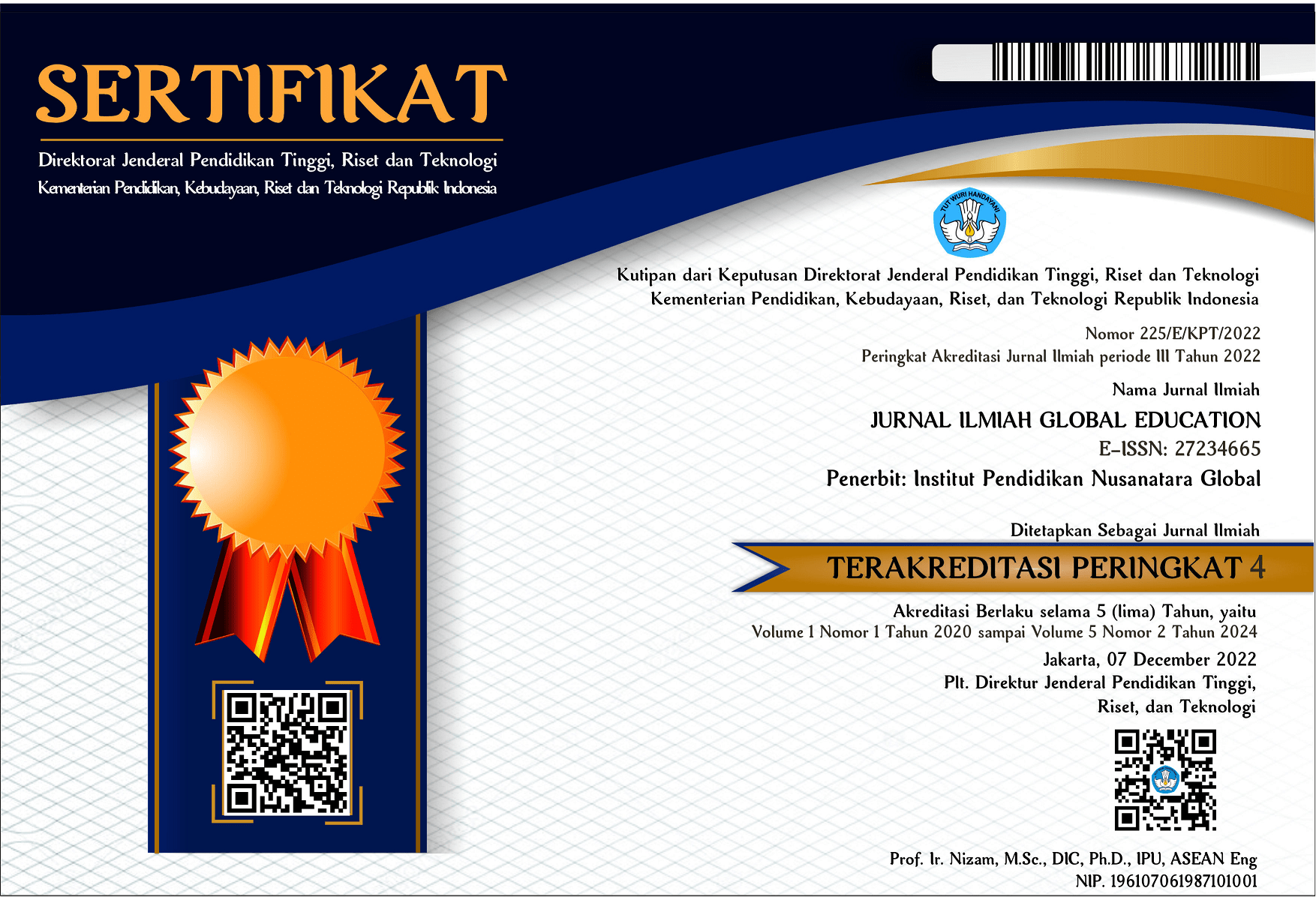KEHARMONISAN KELUARGA PEMULUNG
DOI:
https://doi.org/10.55681/jige.v4i3.1195Keywords:
family Harmony, scavengerAbstract
The purpose of this study is to identify the harmony of the scavengers' living space that can be produced by the integrated garbage disposal system (TPST). Researchers use qualitative methods with a string of string phenomena. Data collection methods use observation, interviews, and documentation. Researchers take on 1 scavenger family of husbands, wives and children. One neighbor, one rt chairman and one from TPST pillow. To examine the validity of researchers' data using credibility techniques, transferability, dependability, and capability, then data are processed and analyzed until it finds the saturated point. What researchers have found is that the study subject is a major factor that makes the scavengers' families feel harmonious, comfort and safety. Worship is the cornerstone of building a harmonious family. The ongoing efforts of the scavenger family to create a harmonious family that is to value one another among family members especially in valuing his proscreation as a scavenger.
Downloads
References
Abraham Maslow, K. (n.d.). KEHARMONISAN KELUARGA BEDA AGAMA PERSPEKTIF TEORI.
Astia dewi p. (2018). Faktor-faktor Pembentukan Keharmonisan Dalam Keluarga Poligami.
Di, S., Sinar, D., Dusun, G., Kecamatan, S., Karai, T., & Kepahiang, K. (n.d.).
FAKTOR KEHARMONISAN KELUARGA PADA ISTRI YANG BEKERJA.
EIGHT LESSONS FOR A HAPPIER MARRIAGE SEBAGAI UPAYA KELUARGA HARMONIS MENIKMATI SOCIETY 5.0. (n.d.).
H.M.A. Tihami, D. (2013). Fikih Munakahat (Kajian Fikih Nikah). Rajawali Pers.
Huzaemah, S. (2020). Sampah Adalah Berkah; Studi Pola Kehidupan Sosial Ekonomi Pemulung Di Sekitaran Tempat Pembuangan Ahir (TPA) Piyungan. Islamic Management and Empowerment Journal, 2(1), 81–92. https://doi.org/10.18326/imej.v2i1.81-92
Istikmaliya, N. (2018). Keharmonisan Keluarga Beda Agama Perspektif Teori. http://etheses.uin-malang.ac.id/12178/1/16780031.pdf
Janah, H. A., & Fitria, N. (2021). Pola Asuh Keluarga Pemulung dalam Pembentukan Perilaku Sosial Anak Usia Dini. Jurnal Anak Usia Dini Holistik Integratif (AUDHI), 3(2), 87. https://doi.org/10.36722/jaudhi.v3i2.597
Jefriyanto, C. (n.d.). PEMULUNG DI ERA MILENIAL (STUDI KASUS DI TPA
JAMUR LABU, ACEH TIMUR). http://journal.iainlangsa.ac.id/index.php/jii
Mardiyan, R., & Kustanti, E. R. (2016). Kepuasan Pernikahan Pada Pasangan Yang Belum Memiliki Keturunan. Empati, 5(3), 558–565.
Menikah, P., Kasus, S., Desa, D., Gadingrejo, K., & Pringsewu, K. (n.d.).
KEHARMONISAN KELUARGA BAGI PASANGAN YANG SUDAH.
Noffiyanti. (2020). Mewujudkan Keharmonisan Rumah Tangga dengan Menggunakan Konseling Keluarga. Al-Ittizaan: Jurnal Bimbingan Konseling Islam, 3(1), 8–12.
Nurtyasrini, S., & Hafiar, H. (2016). Pengalaman Komunikasi Pemulung Tentang Di Tpa Bantar Gebang Scavenger ’ S Communication Experience About Self and. Jurnal Kajian Komunikasi, 4(8), 219–228.
Sugiyono. (2008). Metode Penelitian Kuantitatif, Kualitatif dan R&D. Alfabeta. Suleha. (2017). Pandangan Keluarga Pemulung terhadap Pendidikan Formal di
Kecamatan Sinjai Utara Kabupaten Sinjai.
Downloads
Published
How to Cite
Issue
Section
License
Copyright (c) 2023 JURNAL ILMIAH GLOBAL EDUCATION

This work is licensed under a Creative Commons Attribution-ShareAlike 4.0 International License.













